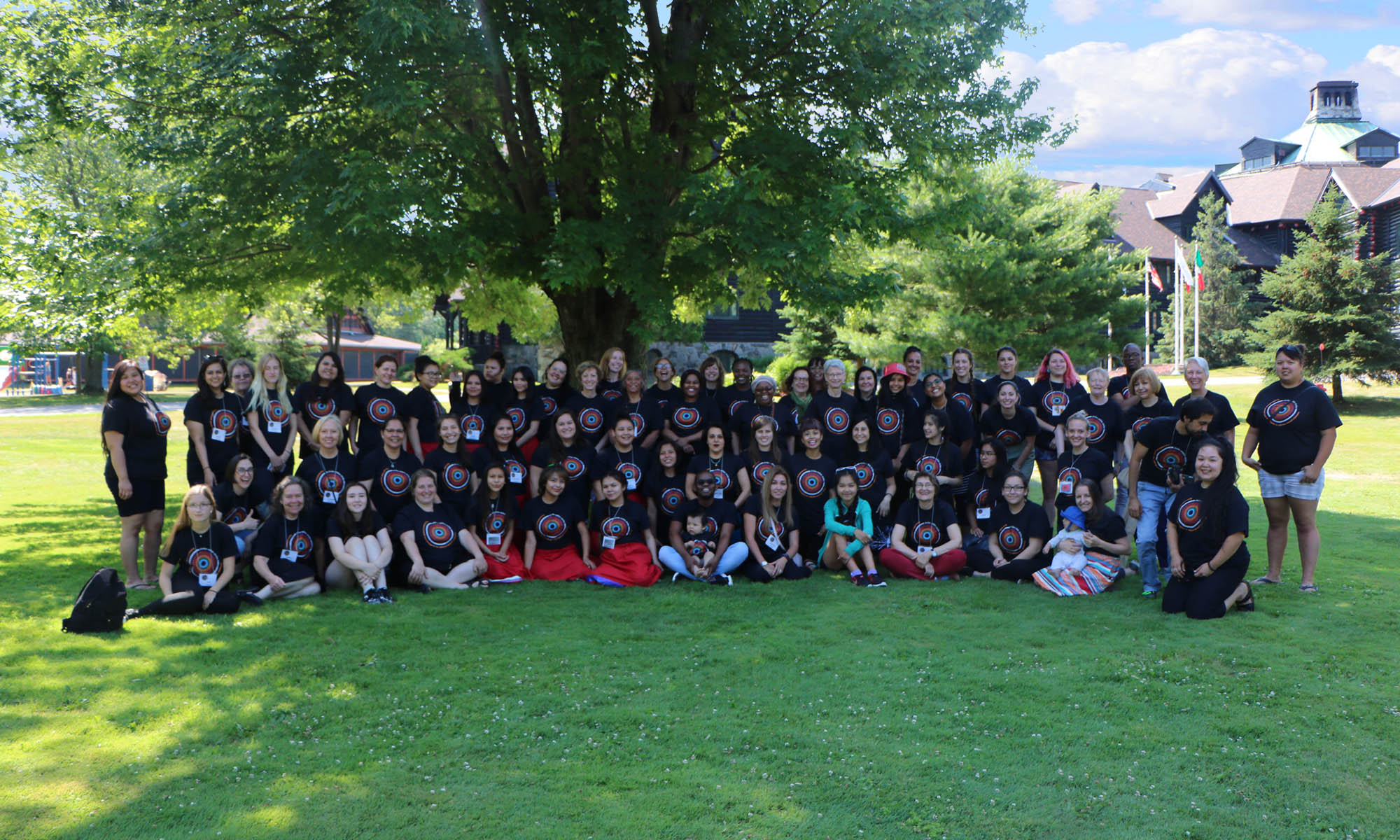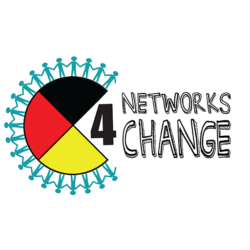First Workshop with Young People in Khetani: Leaders for Young Women’s Success
June 29 – July 1, 2016
By: Rakiya Larkin
The Networks for Change and Well-being Research Team at UKZN held our first workshop with seven young people at the Isibani Welfare Centre in Khetani over three days from 29 June to 01 July. The programme developed for the workshop included activities like body maps, photovoice and drawing. Each visual method used had a purpose, but what the young people and the research team got even more out of the process than we expected.
We started out the first day of our workshops, on July 29th, with warm tea and muffins, as us Durban folk were not used to the frigid cold weather on that Wednesday morning in Khethani. It was a slow start but eventually all the young people arrived and were ready to get down to business. We all went around and did introductions and a check-in to see how everyone was doing that morning and what they were looking forward to about the three days we had together. It is important that we do a check-in and checkout at the beginning and end of each day to start and finish our work in a good way. It allows for the group to discuss, if they feel comfortable, anything that maybe bothering them or anything they need to get off their chest.
The team went over the consent and assent forms again just to ensure all of the young people had their consent forms signed and had signed the assent forms, as well as making sure they knew this was voluntary and that they can stop participating in the project or any of the activities at any time. Once we were all comfortable with the informed consent process, the group then established some ground rules for the day and the workshop that we all agreed upon, such as: phones off/silent until lunch time, keep an open mind on others views and or opinions as well as no judgmental comments, confidentiality (what we say in the group stays in the group) and lastly participate and have fun!
We then moved on to an ice-breaker called Agree/Disagree/Unsure. How this ice-breaker works is that the facilitator reads a series of statements to the group. They then decide whether they agree or disagree with the statement or if they are unsure about whether they agree or disagree. They then go to stand at a particular spot to indicate to the rest of the group whether they agree, disagree or are unsure. Once each participant has chosen where they stand (literally and figuratively!), the facilitator asks participants who are comfortable to do so to explain why they chose the position that they did. This allows for open, non-judgmental group dialogue and for everyone to hear other points of view on a particular issue. The purpose of the ice-breaker was also for the group to start thinking about important issues around gender, sexuality and safety, get out of their comfort zone, and observe some of the differences and similarities within the group, and to learn from each other.
After a lovely hot lunch that we ate sitting in the sunshine that had finally broken through the clouds, we worked on body maps using the prompt “What does it mean to be a girl in my community?”. We used body maps to explore with the young people how they think about their bodies and who they are in relation to their community, how they think about the importance of their safety in the community, and the importance of their thoughts and feelings in their community.

It was amazing for us, as a research team, to see how creative and powerful these young learners were, and what inspiring and important messages they have to share with the world. Their body maps were full of color, pictures, paint, writing and powerful messages of what it means for them to be a girl in their community, and within this they all found new talents within themselves. A few of our participants expressed that they didn’t know they could draw or be creative in such a way and we could see as a team how much pleasure they took in the activity.
Day two of the workshop started with a discussion of leadership. As a team, we felt that it is crucial that the young people we are working with know that there are many different types of leaders and leaderships styles and that one is not more important then the other because each style of leader has a role to play in reaching a common goal. We came up with different examples of leaders such as Nelson Mandela, who was a great leader and was at the forefront of the movement for what he believed in, but he also had leaders and supporters behind him who helped him become great. We also identified Sofi, the founder and head of Isibani, as a leader, as well as each of the young people who are all Peer Educators at their school – wanted them to know they are all leaders in their community and that one person can make a difference no matter where you come from. From the list of leaders that we came up with, we started to identify some leadership qualities/traits do these people have. From that list we asked what leadership qualities we think we have already, and which leadership qualities we don’t think we have but would like to work on. Some of the group shared the qualities that we think we already have, such as confidence, empathy, listening, understanding and passion, and those qualities that we can work on as well. This session gave us the opportunity to reflect on the fact that we can all be leaders and makers of change. We also reflected on the fact that we don’t always need money or a lot of funding to make change, sometimes we can make a meaningful difference if we have passion and dedication.
We spent the rest of the day doing photovoice which is a powerful visual method involving people taking photographs based on a prompt to identify and represent something about their lives, circumstances and/or communities. We started out with a ‘practice run’ using the prompt ‘feeling brave and strong’. Once the young people were a little more familiar with the equipment and process involved they were each asked to take two photographs; one based on the prompt “What makes you feel safe in your community?”, and the other on “What makes you feel unsafe in your community?”. Using a portable digital photograph printer called a Selphy, each person’s photographs were printed. Each young person then stuck each of their photographs onto a piece of paper and wrote the caption beneath the photographs. We then posted their powerful photos on the wall and one by one each of the learners read their descriptions on both photos of feeling unsafe and safe. Some of the themes the youth spoke about involved environmental concerns, safety for girls and young women going out at night, and concerns about alcohol and drug abuse in the community.


The young people came together again as a group after their mini exhibition to come up with a name for their group, and to develop the following curatorial statement for their work:
|
Changing our Communities: Making Better and Safe Places for Young Women By Leaders for Young Women’s Success, Khethani, Winterton This exhibition comes from a photo-voice project conducted as part of the project, Networks for change and well-being: Girl-led ‘from the ground up’ policy making to address sexual violence in Canada and South Africa. The photos for this exhibition were produced by a group of girls and a boy from a local high school in Khethani, Winterton, KwaZulu-Natal, South Africa after a series of workshops on June 29 to July 1, 2016. The prompt for the photo-voice activity was, “Take pictures of ‘feeling safe’ in my community and feeling unsafe in my community as young women”. The facilitator explained the prompt and gave examples of pictures the group members could take, including spaces, people, etc. She also talked to us about the ethics of photo-voice and of taking pictures, for example, that we may not take pictures of children or of people without their permission. The photos in the exhibition tell a story of safe and unsafe places in our community. Our school is a safe place because there are teachers there who are like our second parents. Unsafe places, like the ‘middle of nowhere’ are not good for young women because there are criminals there who are after women and want to hurt them and overpower them. |

The third and last day of the workshop focused on drawing. We asked the Leaders for Young Women’s Success to draw four pictures, each one answering or responding to one of the following four questions: (1) What are the challenges you face to being safe in your community, (2) What would you change about this, (3) What already exists in your community that can help with this dream of change, and lastly (4) How can we put this into action? This activity was similar to the activity that we did with participants in our community consultation workshop on 25 May.

In their drawings the young people drew attention to similar themes to those they addressed in the photovoice activity, including environmental challenges to safety, and alcohol and drug abuse in the community. As researchers we often forget that we cannot conduct proper research on topics and issues we have no idea about, that is why Participatory visual methodologies is so important to making real change in real time. It is one thing for us to assume what these girls, learners and young women go through in their own communities, it is another to allow them to express it themselves and for them to be involved in the process of changing their surroundings and policy around girls safety.
The three-day workshop was busy, and by the end of it all of us were tired – probably the grown-ups more than the young people! We all had a wonderful time and were all sad that it was over. We are all looking forward to working together more in the future and making change!

